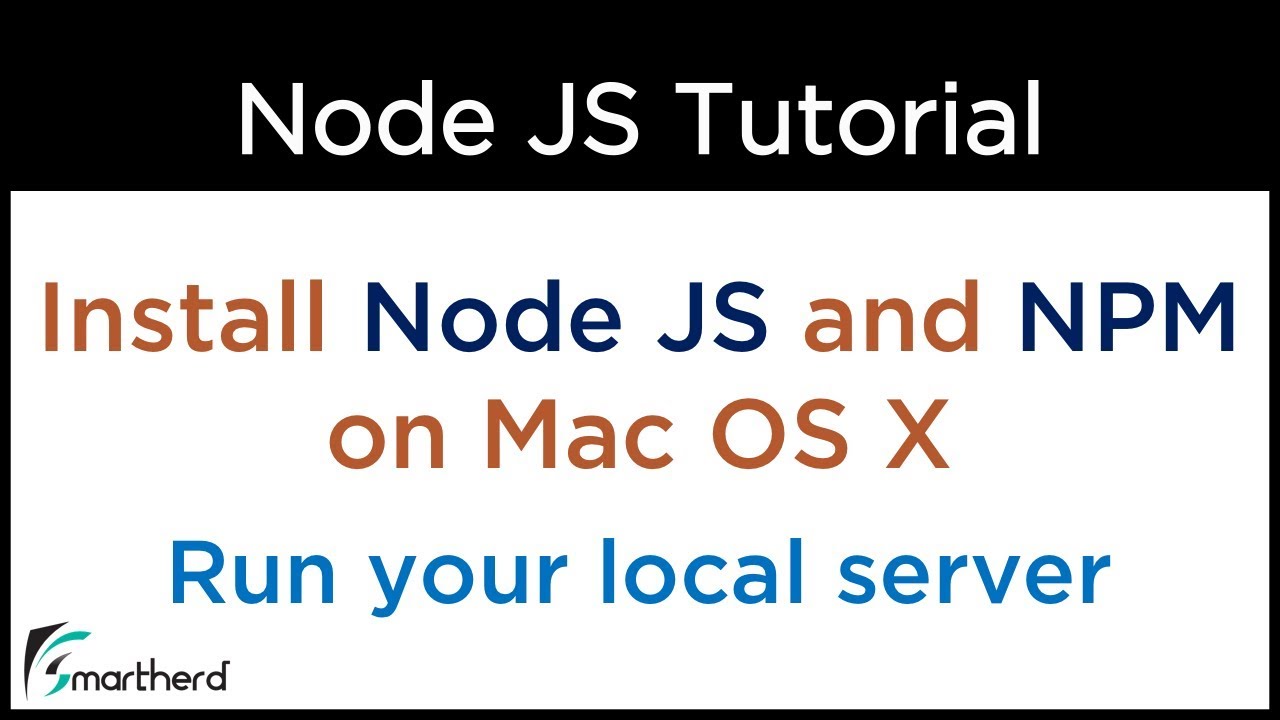
- #Update node js mac how to
- #Update node js mac mac osx
- #Update node js mac install
- #Update node js mac update
State without impacting any branches by performing another checkout. You can look around, make experimentalĬhanges and commit them, and you can discard any commits you make in this Remote: Total 261 (delta 31), reused 99 (delta 25), pack-reused 0 => Downloading nvm from git to '/Users/distiller/.nvm' I get nvm: command not found: # Each step uses the same `$BASH_ENV`, so need to modify itĮcho 'export NVM_DIR="/opt/circleci/.nvm"' > $BASH_ENVĮcho " &.
#Update node js mac install
I have already tried this Change node version in macos image, but it did not work as homebrew is always being updated, but not ruby which causes some random failures on CI and the second script do not install nvm even running the commands below HOMEBREW_NO_AUTO_UPDATE=1 brew install nvm >/dev/null
#Update node js mac update
And like Homebrew, you can easily do this using a command similar to the way you installed it: $ nvm uninstall Īnd a complete example of this might be something like: $ nvm uninstall v0.12.How can I update node version on macos executor? It allows you to install multiple versions of Node on your system so you can easily switch from one to the other.Įventually, you'll probably want to get rid of one of the versions when you're done with it. The Node Version Manager (NVM) is almost as convenient as Homebrew, but in a different way.

Assuming you used brew install node to install it, just execute this to get rid of it: $ brew uninstall nodeĪnd that's it! All traces of the executable will be gone from your system. The command to remove it is just as simple as the command to install it. The Homebrew method is arguably one of the easiest ways to get Node on and off your system. Please let me know if you find any others (and how you installed Node originally)! Homebrew This list should include just about all the references to Node on your system. Delete node.stp from /usr/local/share/systemtap/tapset/.Delete node_modules from /opt/local/lib/.Delete node.d from /usr/local/lib/dtrace/.Delete npm* from /usr/local/share/man/man1/.Delete node* from /usr/local/share/man/man1/.node_repl_history from your home directory npmrc from your home directory (these are your npm settings, don't delete this if you plan on re-installing Node right away) Delete node, node-debug, and node-gyp from /usr/local/bin.Delete node and/or node_modules from /usr/local/include.Delete node and/or node_modules from /usr/local/lib.Note that not all of the directories listed here may exist on your system depending on your install method. To completely uninstall the node executable as well as npm, here are some instructions on what to do: Unfortunately, this isn't easy since there are quite a few directories containing Node resources, like npm and node_modules. If you installed Node either by source or from a binary distribution then you'll likely have to delete the executable and other resources manually. Just keep in mind that these commands will remove the Node executable, and not necessarily all of the Node projects or NPM cache.
#Update node js mac mac osx
Here I'll be describing a few ways you can uninstall it from your Mac OSX computer.

So, what do you do when you want to uninstall Node.js? This could be from a package manager, from the source code, or from a pre-compiled binary distribution.


#Update node js mac how to
If you read one of my earlier posts on how to install Node.js, you probably noticed there are quite a few ways to install it on your computer.


 0 kommentar(er)
0 kommentar(er)
